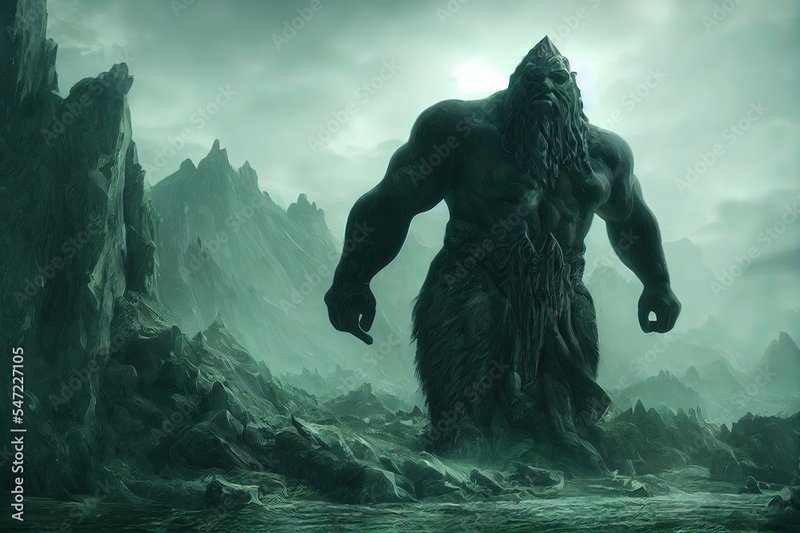
Have you ever seen a creature so fascinating that it leaves you in awe? The Giant Pacific Octopus is one of those wonders of the deep. Found in the northern Pacific Ocean, from the coast of Alaska to California, this octopus isn’t just large—it’s a master of disguise, intelligence, and adaptability. Imagine a curious alien from the sea, capable of changing colors and textures, and you start to grasp what this incredible animal is all about.
These octopuses can weigh up to 110 pounds and stretch nearly 16 feet from arm tip to tip! They live in the rocky crevices of the ocean floor and are known for their remarkable ability to blend into their surroundings. It’s like having a magician in the ocean who can vanish by merely changing its appearance. Their intelligence rivals that of some mammals, making them one of the most intriguing invertebrates on the planet.
As we dive deeper into the world of the Giant Pacific Octopus, you’ll discover its life cycle, behavior, and many unique features. So, let’s explore what makes this creature truly special, starting with its fascinating biology.
Physical Characteristics
The Giant Pacific Octopus is known for its impressive size and distinctive features. With a bulbous head and eight long, muscular arms lined with suction cups, it’s designed for precision and power. Each arm can operate independently, which is remarkable for such a complex creature. Imagine being able to multitask using your arms in different ways at the same time—that’s what these octopuses can do!
In terms of coloration, they are not just one shade. Their skin can exhibit a stunning array of colors, such as reds, browns, and even blues, often shifting to match the environment. This camouflage ability serves as an excellent defense mechanism against predators. You might say they wear their home like a favorite sweater, adapting seamlessly to their surroundings.
Another fascinating aspect is their ability to change texture, which means they can go from smooth to rough in a heartbeat. This skill helps them escape from danger or surprise prey. Picture a superhero changing their outfit at will—that’s the Giant Pacific Octopus, always ready for action!
| Size | Up to 16 feet (tentacle span) |
| Weight | Up to 110 pounds |
| Habitat | Northern Pacific Ocean |
| Diet | Crabs, fish, and other mollusks |
| Lifespan | 3 to 5 years |
| Behavior | Nocturnal, solitary |
Habitat and Distribution
The Giant Pacific Octopus is typically found in the cold, clear waters of the northern Pacific Ocean. They prefer to live in rocky ecosystems, often taking refuge in crevices or under rocks where they can hide from predators. Think of it as their exclusive apartment in a bustling underwater city, where they can retreat and feel safe.
Their range extends from the Aleutian Islands in Alaska down to California, with a preference for depths of around 50 to 600 feet. However, they can sometimes be spotted in shallower waters, especially during their breeding season. These octopuses are adept at navigating their environment, using the ocean floor’s landscape to their advantage.
One of the most compelling aspects of their habitat is how they interact with it. They are known to collect objects like seashells and even bits of debris to create a cozy den. This behavior not only showcases their intelligence but also reflects their resourcefulness. Picture a crafty designer decorating a home—this is how the Giant Pacific Octopus personalizes its space.
Diet and Hunting Techniques
The diet of the Giant Pacific Octopus is as varied as its habitats. They are carnivorous and primarily feast on crabs, fish, and smaller mollusks. They are skilled hunters, using their keen eyesight and remarkable arm strength to capture prey. When hunting, they rely on stealth and patience, often waiting for the perfect moment to strike. You might think of them as underwater ninjas, ready to pounce!
When they catch something, they use their strong beaks—similar to a parrot’s—to pierce the shell of crustaceans and inject venom that helps break down their meal. This means their dinner isn’t just fresh; it’s also well-prepared! The octopus’s hunting techniques are not just about strength; they showcase their intelligence. They can learn from experience and even develop strategies, much like a chess player planning their next move.
After a successful hunt, they usually retreat to their den to enjoy their meal. This solitude allows them to eat in peace, away from potential competitors. Think of it as an exclusive dinner at a fancy restaurant where they can savor every bite without interruption.
Reproduction and Life Cycle
The reproductive process of the Giant Pacific Octopus is both fascinating and tragic. Mating occurs in the spring, when males and females come together in a special embrace. The male uses a modified arm, called a hectocotylus, to transfer spermatophores to the female. Once the job is done, the female lays thousands of eggs and attaches them to her den’s ceiling.
After laying her eggs, the female enters a period of intense care, spending hours tending to them. She protects the eggs from predators and keeps them clean. This maternal devotion is admirable but comes at a cost. During this time, she doesn’t eat, eventually leading to her demise once the eggs hatch. It’s a beautiful yet heartbreaking cycle of life—a final act of love that ensures the survival of the next generation.
The hatchlings, tiny replicas of their parents, emerge after a few months. They are on their own from the start, needing to fend for themselves in the vast ocean. This independent life is fraught with challenges, but it also offers plenty of opportunities for growth and discovery.
Intelligence and Behavior
What truly sets the Giant Pacific Octopus apart is its intelligence. These creatures exhibit remarkable problem-solving skills and are known to escape from enclosures, navigate mazes, and even use tools. Imagine a pet that can unlock its cage just to explore the house—that’s the kind of smart we’re talking about!
They also exhibit complex behaviors such as playing, which scientists have observed when they interact with objects like toys. This playful nature gives us a glimpse into their cognitive abilities and suggests they have a richer inner world than we might expect. They remember experiences and can learn from them, making each day in the ocean a new adventure.
Socially, Giant Pacific Octopuses tend to be solitary creatures. They prefer their own company and only come together for mating. However, within their dens, you might find them displaying particular personalities, which can vary from one individual to another. Some might be more curious and bold, while others are shy and withdrawn. It’s like meeting different characters in a story, each with their own quirks and charm.
Conservation Status
While the Giant Pacific Octopus is currently not considered endangered, its habitats are threatened by human activities. Overfishing, pollution, and climate change impact their ecosystem, leading to concerns about their future. The delicate balance of their environment is crucial for their survival, and changes can have significant effects on their populations.
Conservation efforts focus on protecting marine habitats and promoting sustainable fishing practices. By ensuring we keep our oceans healthy, we not only support the Giant Pacific Octopus but also the entire marine ecosystem. It’s like maintaining a garden; when one plant thrives, the entire garden benefits.
Raising awareness about these amazing creatures can also play a role in their conservation. The more we learn about them, the more we appreciate their place in the oceanic tapestry. It’s essential for us to advocate for their protection, ensuring future generations can marvel at their beauty and intelligence.
FAQ
What is the average lifespan of a Giant Pacific Octopus?
The average lifespan of a Giant Pacific Octopus is around 3 to 5 years. They grow rapidly and reach maturity in about 1 to 2 years. However, their life is relatively short compared to other marine creatures.
How do Giant Pacific Octopuses defend themselves?
The Giant Pacific Octopus has several defense mechanisms. Chief among them is its ability to change color and texture for camouflage. They can also expel ink to create a smoke screen and escape from predators, much like a magician vanishing in a puff of smoke!
Are Giant Pacific Octopuses social creatures?
Generally, Giant Pacific Octopuses are solitary animals. They prefer to live alone, coming together only for mating. This solitary behavior is part of what makes them so unique in the marine world.
What do Giant Pacific Octopuses eat?
These octopuses primarily eat crustaceans like crabs, as well as fish and other mollusks. Their hunting technique involves stealth and patience, showcasing their intelligence as they outsmart their prey.
Can Giant Pacific Octopuses change color?
Yes! One of the most remarkable features of the Giant Pacific Octopus is its ability to change color and texture. This skill helps them blend into their surroundings, which is essential for both hunting and avoiding predators.
Where can I find Giant Pacific Octopuses?
Giant Pacific Octopuses are commonly found in the northern Pacific Ocean, ranging from Alaska to California. They prefer rocky environments and can be seen at depths of 50 to 600 feet, although they sometimes venture into shallower waters.
Are they dangerous to humans?
Giant Pacific Octopuses are generally not dangerous to humans. While they do have a beak and can bite, they are not aggressive and prefer to avoid confrontation. However, it’s best to appreciate them from a distance in their natural habitat.
How do researchers study Giant Pacific Octopuses?
Researchers study Giant Pacific Octopuses using various methods, including underwater observation, tagging, and aquarium studies. These methods help scientists learn about their behavior, intelligence, and ecology, enriching our understanding of these fascinating animals.
What is the biggest threat to Giant Pacific Octopuses?
The biggest threats to Giant Pacific Octopuses include habitat destruction, overfishing, and pollution. Protecting their habitats is crucial for their survival and the overall health of marine ecosystems.
How do Giant Pacific Octopuses communicate?
Giant Pacific Octopuses communicate primarily through body language. They use color changes to signal mood and intentions to other octopuses. This visual communication is essential for interactions, especially during mating rituals.
What can we do to help protect Giant Pacific Octopuses?
We can help protect Giant Pacific Octopuses by advocating for sustainable fishing practices, reducing plastic use, and supporting marine conservation efforts. Raising awareness about their plight also contributes to their continued survival.
Do Giant Pacific Octopuses have any predators?
Yes, they do! While adult Giant Pacific Octopuses are relatively safe due to their size and camouflage abilities, they can still fall prey to larger sharks and sea lions. Young octopuses are more vulnerable and face threats from various marine animals.
What is unique about their arm structure?
Each arm of the Giant Pacific Octopus is equipped with numerous suction cups that help them grip and manipulate their environment. These arms can operate independently, allowing the octopus to multitask effectively and interact with its surroundings in complex ways.

